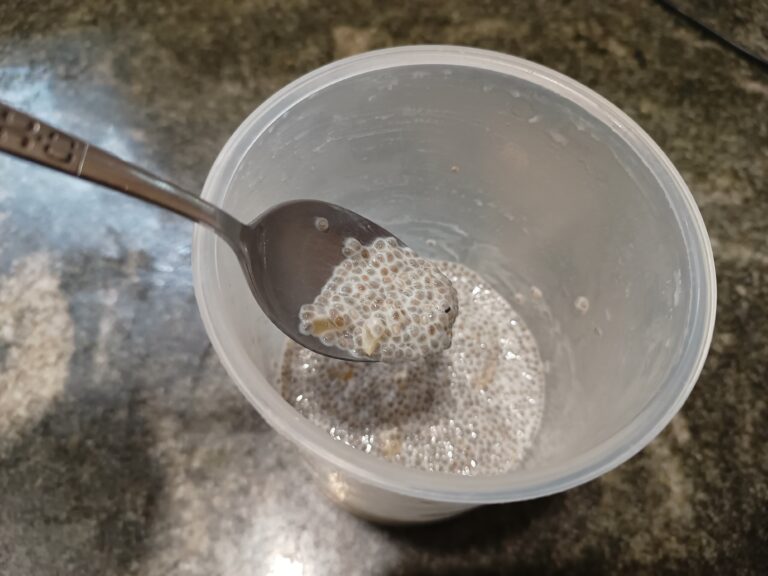Pain management – beyond mainstream painkillers
Acute and chronic pain is the pits – it’s massively destructive to your quality of life.
I’ve talked about some problem-specific pain management options in recent articles about arthritis and gut health. However, after a recent consultation, I thought it was time for a broader discussion of the naturopathic options.
Mainstream pain medication has its uses – if you’ve just broken your leg, then sucking on that “green whistle” while the ambos transport you is REALLY helpful.
However, severe chronic pain is a whole other thing. In this situation:
- Not all medications work the same for all people – some people simply don’t respond to common medications.
- You can develop tolerance to a medication – which means it stops being as useful.
- Many pain medicines are addictive, so medicos just won’t LET you stay on them.
- Many pharmaceutical pain medications have toxic side effects, impacting everything from kidney and liver function to gut health.
(This may occur subtly over years but the results can be nasty – so read the warnings on anything you take long-term.)
Chronic pain has a neurological component as well – your body can lock into pain patterns out of habit and expectation. So understanding the pathology of pain is really helpful. Pain Australia has some good information here: https://www.painaustralia.org.au/about-pain.
I think we all intuitively know that when we are feeling depressed or under huge stress that our pain levels can increase. That means that for long term pain you need an approach that manages your whole “system” – your body, mind and spirit – not just your symptoms.
The Naturopathic approach to pain management
As a Naturopath and Massage therapist, I’m trained to take a holistic approach. So I treat the whole person and take the time to explore for root causes and underlying issues.
My toolkit as a Naturopath and Remedial Massage Therapist includes:
- Managing various forms of inflammation that cause pain
- Lifestyle modifications including water therapies, sleep optimization
- ENAR (acupuncture without needles)
- Acupuncture
- Massage
- EFT (Emotional Freedom Technique or ‘tapping’)
- Herbal medicines
- Supplements
- Gut function testing and management
- Specific diet and exercise “prescriptions”
I tailor a program for each individual patient, taking into account their needs, likes, ability and skills, age, motivation, financial ability, health background, medication history and other factors.

Commonly used pain medications and side effects (please know your medicines)
Steroids – medications like prednisolone, betamethasone, hydrocortisone – have a whole range of side effects. They include constipation, gut bacteria imbalance, increased appetite, mood swings, reduced immune function and delayed wound healing.
Paracetamol (acetaminophen) – which you probably buy as Panadol – is commonly seen as “safe”. However, it’s only “safe” if you’re careful – you may have liver failure if you exceed the recommended dose (even by one or two tablets over). This is known to be a common cause of overdose in teenagers as it is so accessible in the home and over the counter.
If you are a regular paracetamol user, have liver function tests (blood test) done regularly to see how your body is coping with the extra liver stress. Monitor yourself for symptoms such as dizziness, fatigue, weakness, blurred vision, abdominal pain and diarrhoea.
Opioids (Narcotics) – things like codeine, morphine, endone, oxycodone, fentanyl (50 -100 times stronger than morphine), tramadol – are problematic because your body develops an increased tolerance to them. This means that you need more to get the same effect over time. Opioid risks include: addiction, nausea, vomiting, sedation, dizziness, loss of appetite and constipation
NSAIDs (Non-Steroidal Anti-inflammatory Drugs) – products like aspirins, ibuprofen (Nurofen), naproxen (Naprosyn) , indomethacin (Indocid), diclofenac sodium (Voltarin), celecoxib (Celebrex), meloxicam (Mobic) – have side effects including: imbalance in gut microbes, stomach ulcers and bleeding internally, headaches, dizziness, indigestion, some have heart side effects.
Lyrica (pregabalin) is a drug originally used as an anti-convulsant for nerve pain. Its problems include increased tolerance requiring increased dosage, dizziness, confusion, drowsiness, blurred vision, dry mouth, constipation, swelling in hands/feet, weight gain.
Anti–depressants – have a range of side effects. The older Tricyclics have problems including stomach upset, blurred vision, dizziness. SSRIs or SNRIs like Zoloft, Prozac, Effexor, Cymbalta have side effects including lowered libido, weight gain, stomach upset.
Acid lowering drugs – Protein Pump Inhibitors (PPIs) – omeprazole (Nexium), pantoprazole (Somac) – have side effects including headache, diarrhoea, blurred vision, impaired breakdown of protein from food, increased vulnerability to gastrointestinal infections.
These are recommended for use only for 4 to 6 weeks after which you need to have a conversation with your GP (and Naturopath) about reduction. In fact this should be part of the conversation when folk are first introduced to this drug.
A recent report on Radio National outlines a summary of research on how ineffective antidepressants and other meds are for non cancer chronic pain. https://www.abc.net.au/radionational/programs/healthreport/antidepressant-treatment-for-chronic-pain/101996892
Rule out bigger issues and make sure you’ve got to the root cause
One of the first steps I go through with my patients is an evaluation to ensure that they’ve identified the root cause of their pain.
For example:
- CIRS (Chronic Inflammatory Response Syndrome) is a multisystem pain disorder often related to Mould or other toxins. It can also be a post-viral problem from long COVID or other infections – but if it’s mould, you need more than pain killers.
- Chronic sinus pain may be linked to an underlying jaw disorder, a tooth abscess or other dental issue or as a reaction to pollutants in the air. If it’s an undiagnosed tooth abscess then you’re risking whole-body infection – so pain medication isn’t the answer (no matter how much you hate dentist visits).
- Chronic gut pain may be attributed to underlying inflammation from an Auto-Immune disease like Ulcerative colitis or Crohn’s Disease or un-diagnosed Coeliac Disease (allergy to gluten) which affects about 1 in 70 folk in Australia. Currently about 80% of these are UNDIAGNOSED.
I also work with patients to make sure they have ruled out any red flag issues with their GP, such as:
- Blood in their stool – which could mean their gut pain is bowel cancer
- Long term abdominal bloating and cramping – which could indicate anything from ovarian cancer to endometriosis
- Possible vertebral disc prolapse as a cause of back pain
- Long term opioid use itself can cause increased pain – there’s growing evidence that long term/high dose opiods can make the pain experienced more severe
- Stomach pain or neck/shoulder pain – which can both actually be heart attack pain and experienced as chronically smouldering pain, not just an acute pain attack
- Back pain continuing overnight may be associated with osteoporosis or cancer.
Some DIY/safe starting points
Once you’ve got to the root cause and ruled out red flag issues, then there are some approaches to specific problems that could be worth exploring by yourself:

Headaches
Try a drop or 2 of lavender oil or Tiger Balm at the base of your neck or around your temples.
Make sure you are NOT allergic or sensitive to these powerful essential oils before you start. Try a drop on your wrist to see if you get any skin reaction like burning, itching, redness. Keep the oil away from your eyes. You can purchase diluted oils to be safer yet still effective.
Rest, relax, and calm your body and mind with meditation, music, or even a walk in nature – whatever you personally chill to.
Self massage can work wonders. Learn some basic DIY acupressure spots: at the base of your skull next to your spine on both sides – much cheaper than drugs. The middle of the webbing between your thumb and index finger (BUT NOT if you’re pregnant); and the sinus points at the top of your nose where it meets the eyebrow on both sides.
Gastric pain
Many people today suffer from gastro-oesophageal reflux pain – which can show up as a burning sensation anywhere from the gut to the mouth, or sometimes as a dry cough.
In this situation, you could consider:
- elevating the head of your bed a little
- eating smaller meals at night
- leaving at least 2 hours after eating before bed
- reducing your sugar intake
Aches and pains from arthritis and inflammation
Consider PEA as a safer alternative to NSAIDs (Non-steroidal anti inflammatory drugs) like aspirin and ibuprofen.
PEA (palmitoylethanolamide – yikes!) is a pain relieving substance that all our cells make daily that has been synthesized for our convenient use. It can be:
- Taken internally (correct dosage important from a Naturopath); OR
- Mixed with a cream and used externally for problems like post-shingles neuralgia.
Make sure you purchase PEA that is manufactured in a way to be best absorbed by your body, otherwise you are wasting your money (ask your Practitioner about an effective brand).
Arnica and comfrey creams are made from natural anti-inflammatory herbs.
Creams made with Stinging Nettle or St John’s Wort can also be brilliant for arthritis aches & pains. These can be useful externally instead of Voltaren cream and can reduce the need for oral NSAIDS and paracetamol.
Ice and heat packs – used correctly – help with musculoskeletal pain as well as gut or period pains.
Ginger packs (plus castor oil) are also great for gut and period cramps. A recipe I use is : https://athletesanctuary.com.au/portfolio-posts/ginger-compress-recipe/
Foot baths with Epsom salts/Radox and fresh or powdered ginger are great for foot pain, and also generally relaxing especially if you are feeling the cold.

Check for her in your garden now. Use for arthritis, brain fog, healing tissue
Other safe to use herbs at home for pain include: turmeric, gotu cola, slippery elm bark powder, sage, marjoram, meadowsweet, passionflower, skullcap, valerian, lavender, ginger, kava, lemon balm, lemon verbena, celery seed etc.
These can be used as teas or purchased as a liquid herbal extract from a Naturopath. Advice is best given to the individual person and their pain issue to be most specific and safe for that person.
Long term pain requires a long term management process, not pills
GPs today are under extreme time pressure, and specialist Pain Management experts are hard to find and harder to get in to see. They don’t always have the resources and breadth of problem solving experience to be health detectives.
In today’s busy world, where pharmaceutical advertising promises quick relief, it’s all to easy to pop a pill and “soldier on”.
However, “soldiering on” has brought quite a lot of patients to my practices with everything from long term COVID to post-shingles neuralgia and cardio-vascular issues.
A naturopathic approach to pain management is personalised
Herbal medicines that help with chronic pain are often called ‘adaptogens’ as they help to repair your body/mind and how they adapt to chronic stress and pain. Examples are: Withania, Siberian Ginseng, Rhodiola, Panax Ginseng, Medicinal mushrooms, and Licorice root.
Other specific ‘pain’ modulating herbal medicines include Corydalis ambigua (Corydalis), Piscidia (Jamaica dogwood), Salix alba (White willow bark), Viburnum opulus (Cramp bark), Disoscorea villosa (Wild yam), Boswellia serrulata (Frankincense family), Escholtzia californica (California poppy) etc.
These are best prescribed for the individual to maximise their benefits. Both the correct dose and their quality are important, as many herbal medicines are adulterated with cheaper ingredients.
Chronic pain typically requires a team of people to support you. I work alongside practitioners who can help you with strategies like: Meditation and Breathwork to calm the mind. Also bodywork practices like massage/Physio/osteopathy to relieve the body. Other helpful practices include Hypnotherapy, Counselling Psychology, Yoga, and Tai Chi/QiGong.
Drugs aren’t “the answer” to long term pain
Drugs have side effects that can add to your problems instead of solving them.
If you’re experiencing long term pain put a management process in place – and your friendly local Naturopath can help you improve your quality of life.
Get in touch through my contact page if you’re tired of going it alone.






